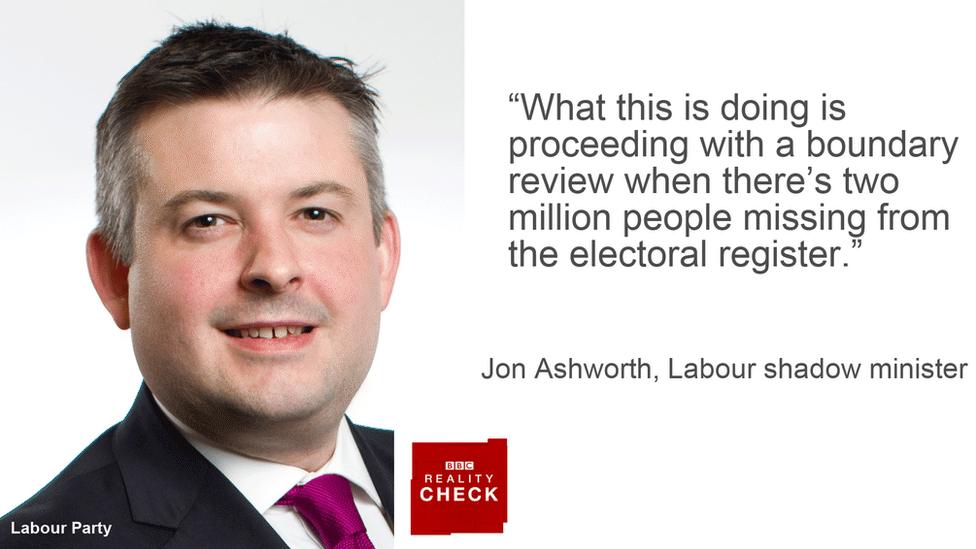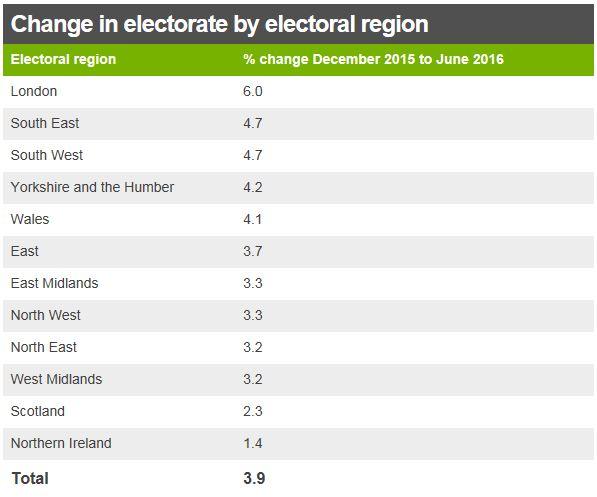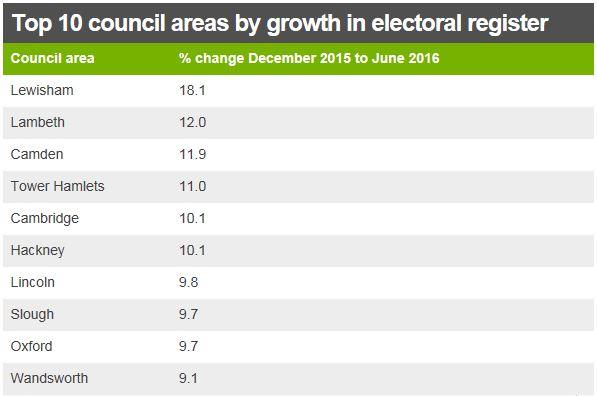Reality Check: Do boundary changes exclude millions of voters?
- Published

The claim: The boundary review is excluding two million voters.
Reality Check verdict: The review is based on the December 2015 register, which has about 1.75 million fewer voters than had registered by June 2016. If the June 2016 register had been used, there would have been two more MPs in London, two fewer in Scotland, one more in the south west of England and one fewer in Northern Ireland.
Labour frontbencher Jon Ashworth has told BBC Radio 4 the proposed constituency boundary changes would mean "proceeding with a boundary review when there's two million people missing from the electoral register - two million people who joined the register ahead of the Brexit referendum".
Boundary commissions for England, Wales, Scotland and Northern Ireland have been given the job of redrawing the constituency boundaries so that by the 2020 general election the number of members of parliament is cut from 650 to 600 and the number of voters in each constituency is within 5% of the average (excluding four island constituencies).
The changes are based on the electoral register in December 2015, when the size of the parliamentary electorate in the UK was 44.7 million.
Some politicians have criticised the use of the December 2015 register because it came at the end of the move from household voter registration to individual voter registration, which had reduced the size of the electorate.
Also, by the time of the EU referendum in June 2016, the register had grown by about 1.75 million to 46.5 million.
Would that have made a difference? Only if the new voters had been unevenly distributed across the country.
If they had been evenly distributed, the average number of voters in a constituency would just have gone up and it would have made no difference.
But the new voters were not evenly distributed.
The House of Commons Library has worked out, external that the biggest percentage increase was in London, where the electorate grew by 6% between December 2015 and June 2016, while the smallest was in Northern Ireland, where it grew by 1.4%.

Its calculations showed that if the review had been carried out based on the June 2016 register, there would have been two more MPs in London, two fewer in Scotland, one more in the south west of England and one fewer in Northern Ireland.
But these figures mask much bigger changes at the level of council areas.
The places in England that have seen the biggest percentage increases in the number of people registered are generally strong Labour areas - they are particularly focused in inner-London.

However, looking across all the councils in England, the change in the electorate is not correlated with areas of Labour strength.
Inner London is balanced out by other areas where few extra people registered.
Labour-dominated Manchester and Stoke on Trent were among only four places to see their electorates fall.
The others were Boston and the City of London.
Places that saw small electorate increases include Sunderland, Chesterfield, Knowsley and Leicester - all Labour heartlands.
So it is not clear that basing the boundary review on the June 2016 register would make things much better for Labour.



- Published13 September 2016

- Published13 September 2016

- Published13 September 2016
- Published22 February 2016
